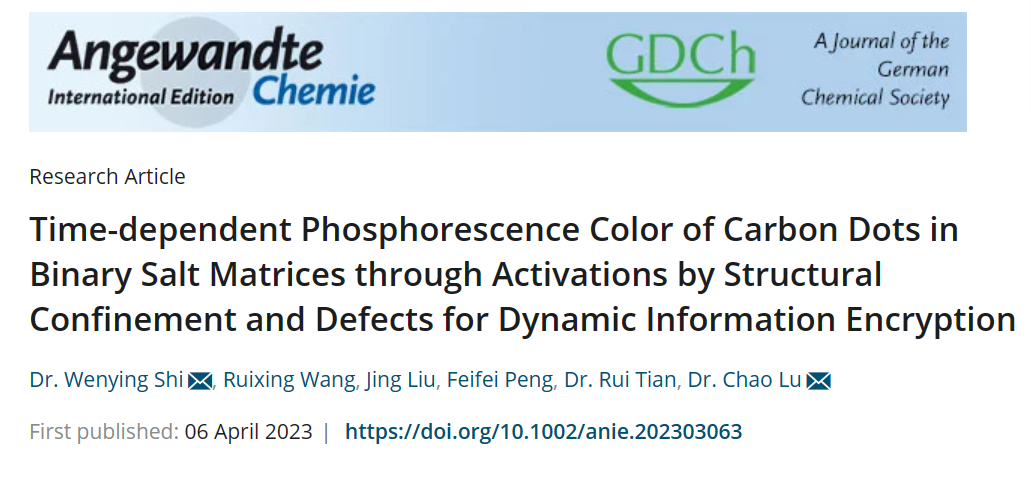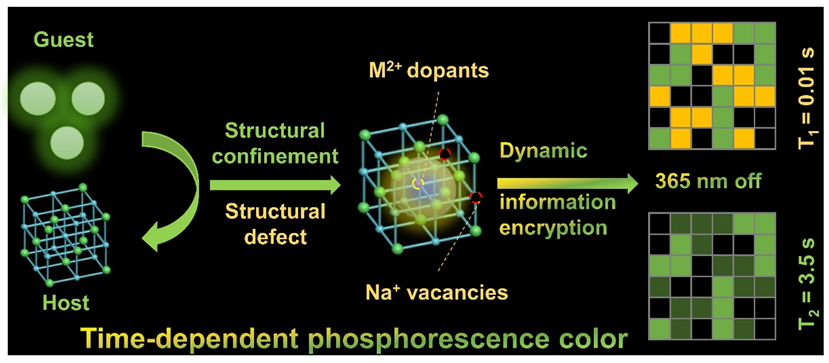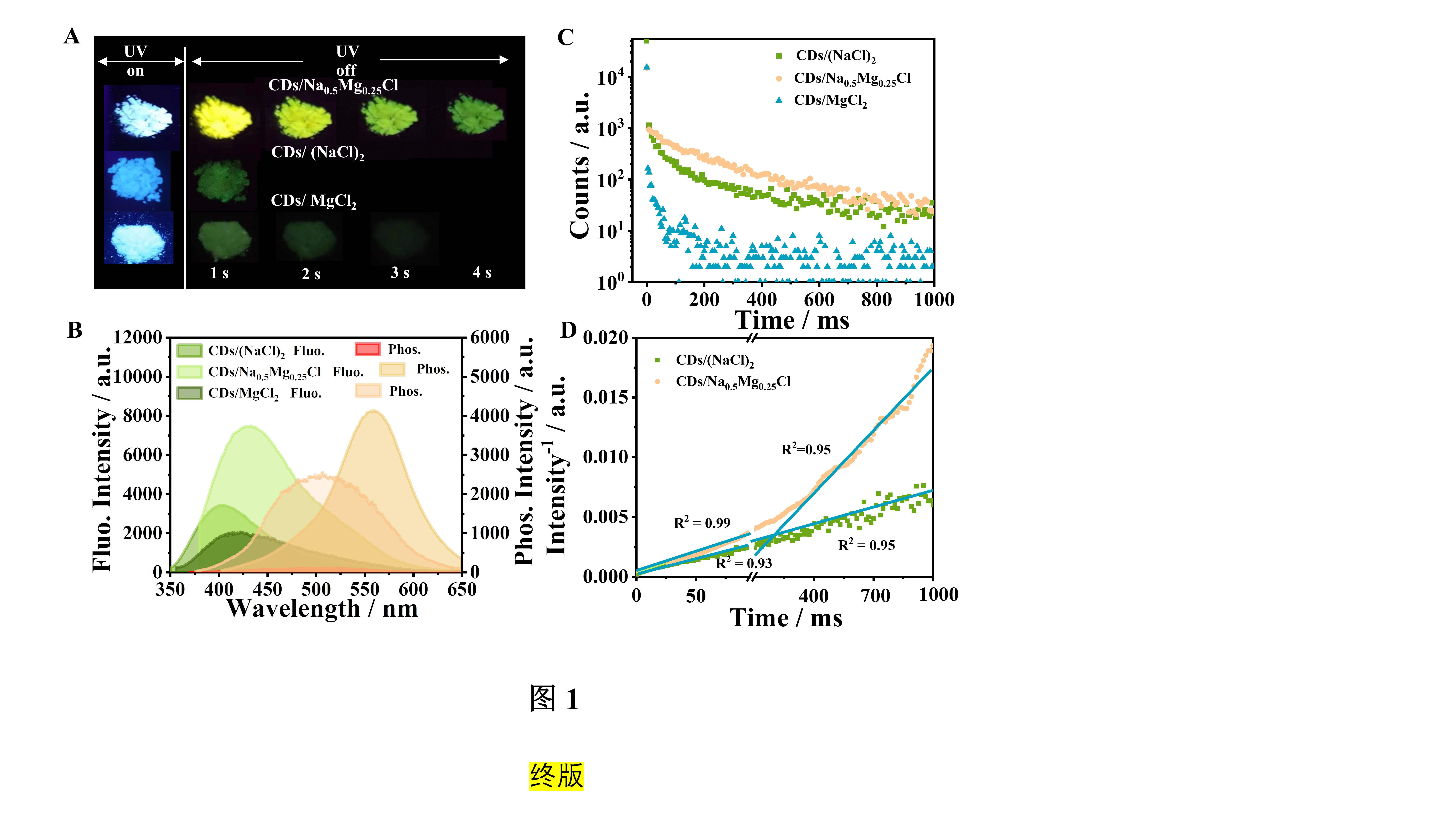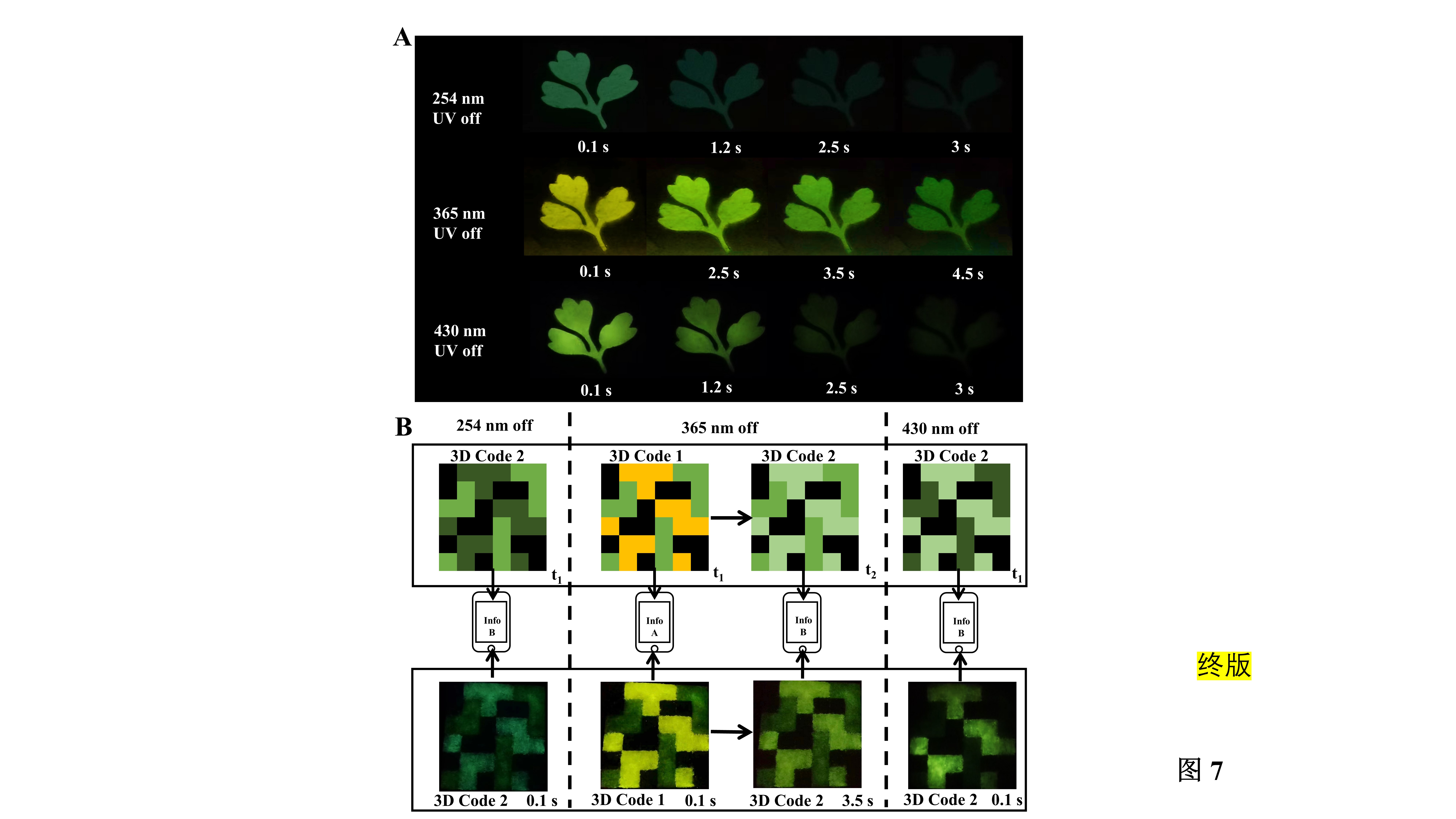
Recently, Professor Wenying Shi and Professor Chao Lv Group at college of chemistry published a research paper entitled “Time-dependent Phosphorescence Color of Carbon Dots in Binary Salt Matrices through Activations by Structural Confinement and Defects for Dynamic Information Encryption” in Angew. Chem. Int. Ed (Angew. Chem. Int. Ed. 2023, 62, e202303063).
Amongst the signal outputs for information encryption techniques, time-dependent phosphorescence color (TDPC) is indeed a superior candidate. Because TDPC materials output employs the additional channels in the time dimension for multilevel encryption modes and dynamic storage, which has taken information encryption to high-security levels. Unfortunately, most of the organic TDPC materials currently available are required tedious synthesis processes and have poor photostability, which is unsuitable for long-term information storage. Throughout TDPC development history, it is still in its infancy. Therefore, one of the effective routes to solve the current dilemma lies in how to endow the existing, low-cost, and nontoxic luminescent materials with new TDPC properties, to cope with the urgent information encryption needs.

Fig 1. The schematic illustration for the formation of the TDPC materials.
In this work, carbon dots (CDs) were chosen as guest luminescent materials, while inorganic NaCl salt were chosen as host matrices (Fig 1). To solve the problem that excitons located in a single structural environment (confinement) have the same transfer path, resulting in the same emission color, another structural effect (structural defects) of an inorganic matrix was introduced by simple metal doping. Interestingly, the co-existence of dual metal ions in an inorganic NaCl matrix triggered the unique TDCP properties, where the RTP color of CDs/Na0.5M0.25Cl (M = Mg2+, Ca2+, or Ba2+) changed from yellow to green. According to I−1–t curve plotted by the decay curve, we guess the phosphorescence of CDs/Na0.5Mg0.25Cl is likely to occur through the tunneling correlation process, which is a prominent feature of defect-induced luminescence. In contrast, the presence of a single metal in an inorganic matrix (NaCl or MgCl2) can only activate the green RTP of CDs. This distinct luminescence characteristic shows structural defect (lattice defect) induced by metal doping is responsible for yellow RTP, while structural confinement is responsible for green RTP (Fig 2).

Fig 2. (A) Photographs of CDs/Na0.5Mg0.25Cl, CDs/(NaCl)2, and CDs/MgCl2 before and after turning off the UV lamp (365 nm) under air atmosphere. (B) Steady-state photoluminescence spectra of CDs/Na0.5Mg0.25Cl, CDs/(NaCl)2 and CDs/MgCl2 (Fluo. = Fluorescence and Phos. = Phosphorescence) (C) The time-resolved phosphorescence decays of CDs/Na0.5Mg0.25Cl, CDs/(NaCl)2 and CDs/MgCl2. (D) The functional relationships between Phosphorescence intensity (I–1) and time (t).
In particular, with the help of the excitation wavelength-dependent TDCP performance, the CDs/Na0.5Mg0.25Cl can be used for multi-level dynamic phosphorescence color 3D coding to achieve advanced dynamic information encryption (Fig 3). This proposed strategy can not only give new life to old luminescent materials but also open up a new avenue for the design and application of time-dependent dynamic luminescent materials.

Fig 3. (A) The phosphorescence photographs of CDs/Na0.5Mg0.25Cl after turning off the UV lamp (254, 365, and 430 nm) under air atmosphere. (B) Multilevel phosphorescence colored 3D codes for advanced dynamic information encryption.
